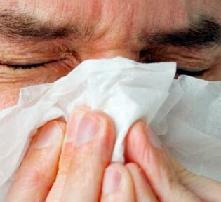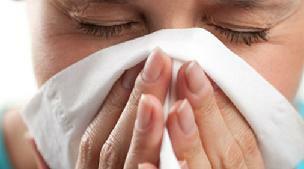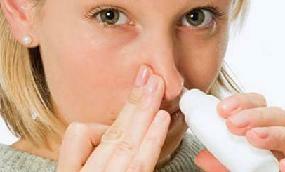 Such a pathology as chronic rhinitis is common enough. With this form of rhinitis, there is a chronic inflammation in the area of the nasal mucosa, and the forms of the disease may be different.
Such a pathology as chronic rhinitis is common enough. With this form of rhinitis, there is a chronic inflammation in the area of the nasal mucosa, and the forms of the disease may be different.
The chronic form of catarrhal rhinitis can be a continuation of poor-quality treatment of the acute form of rhinitis or become a consequence of the introduction of microbes deep into the mucosa than it causes solid destructive changes in the membrane, and weakening the immunological protective function of the organism. And in some cases, the patient has an allergic reaction to the mucosa.
In this article we will consider all the nuances of chronic rhinitis, its causes, symptoms and topical therapies in adults.
Reasons for the
What is it? The effectiveness of treatment of chronic rhinitis depends on whether the root cause of the disease is correctly established. Chronic inflammation of the nasal mucosa may be is caused by the following predisposing factors of :- of kidney, heart and vascular disease;
- curvature of the septum of the nose;
- adenoids;
- sinusitis;
- occupational hazards;
- smoking, alcoholism, drug addiction;
- dysmenorrhea( painful menstruation).
Provoke chronic rhinitis:
- is a bacterial, viral, fungal infection;
- of the sinus disease;
- trauma to the nose;
- volatile toxic compounds - vapors of sulfuric acid, mercury;
- irritating effect of external factors - dust, smoke, cold, dry air.
The most common allergens that cause allergic rhinitis:
- Vegetable - dry foliage, hay, mold and of course pollen of flowering plants: trees( birch, hazel, aspen, etc.), weeds and meadow grasses( ragweed, dandelion, wormwood, hedgehogteam, timothy, etc.), cereals( rye, corn etc.).
- Household - home, library and hotel dust, dust mites( present in upholstered furniture, carpets, mattresses, soft toys, etc.), wool and dandruff cats, dogs, rabbits, hamsters and other animals;feathers and down of pillows and blankets;dry food for fish and animals;cockroaches and rodents, their excrement and scales;spores of mold fungi, etc.
- Chemical - industrial chemistry, latex, rubber and plastic products, washing powders and detergents, cosmetics and perfumes.
Often, chronic rhinitis occurs after acute acute rhinitis.

Symptoms of chronic rhinitis
To know how to cure chronic rhinitis, it is necessary to establish the cause of its occurrence correctly. Otherwise, treatment will not be effective, or may aggravate the course of the disease. In the formulation of the correct diagnosis, the symptoms of chronic rhinitis will help, they can be used to determine what kind of rhinitis it is.
Consider all varieties of the common cold in adults:
- Vasomotor runny nose ( rhinitis vasomotorica), depending on the prevalence of a symptom may be a hypersecretory form, when the main complaint is a significant discharge from the nose;vasodilator( the leading symptom is nasal congestion) and combined( vasodilator-torno-hypersecretory) form, when the patient is disturbed both by significant discharge from the nose and difficulty in nasal breathing. The allergic form can be seasonal or permanent.
- Atrophic chronic .Symptoms: thinning of the nasal mucosa, widening of the nasal passages, a feeling of dryness in the nose, secretion of thick mucus, formation of crusts on the mucosa, difficulty in nasal breathing, impaired sense of smell. When removing crusts from the mucosa, a small bleeding or sore may form.
- Chronic catarrhal - characterized by complaints of patients on permanent mucous discharge from the nose and periodic difficulty of nasal breathing with variable laying of one or the other half of the nose. With anterior rhinoscopy, hyperemia of the mucous membrane with a cyanotic shade, edema, presence of mucous secretions, especially at the bottom of the nasal cavity, are determined. After lubricating the nasal mucosa with vasoconstrictive solutions, a significant decrease in the volume of the tissues of the lower and middle nasal concha occurs, which indicates the presence of false hypertrophy, i.e.edema.
- Chronic hypertrophic - characterized by hyperplasia of the mucous membrane, often involving the periosteum and bone tissue of the nasal concha and can be diffuse and limited in shape. Most often, the growth and thickening of the mucous membrane occurs on the inferior nasal concha, less often in the places of localization of cavernous tissue.
- Allergic - is manifested by watery mucus discharge from the nose with itching, burning, bouts of sneezing. The causes of an allergic rhinitis are usually: house dust, mites that live in house dust, tobacco smoke, scales of skin or animal hair, spores of fungi, spider web, etc. It can be year-round.
- Ozena( ogaepa) is a severe form of atrophic process in the nose that extends both to the mucous membrane and to the bony walls of the nasal cavity and nasal concha with the production of a fast-drying detachable with a strong specific, unpleasant odor.
In the absence of adequate treatment, rhinitis can lead to complications such as sinusitis, sinusitis, polyps in the nose, inflammation of the middle ear.
How to treat chronic rhinitis
The optimal way to treat chronic forms of rhinitis is complex. It can include the following methods:
- medication;
- physiotherapy procedures;
- surgical intervention;
- use of folk remedies.
Depending on the form of chronic rhinitis, the symptoms and treatment regimen in adults will differ:
- When is used for , the widespread use of magnetotherapy and laser therapy, treatment with homeopathic medicines.
- With atrophic rhinitis , drugs that can improve trophism of the mucosa are used.
- The manifestations of allergic rhinitis are eliminated with the help of antihistamines, vasoconstrictor and hormonal agents.
- For the treatment of vasomotor rhinitis laser therapy, cryodestruction, radio wave surgery and other methods are used.
- With catarrhal rhinitis , local antibacterial treatment is recommended depending on the results of bacteriological culture of excreta.
- With , hypertrophic rhinitis will require surgical intervention under local anesthesia.
- Modern medicine uses a bloodless method to remove sections of the mucosa - a laser beam.
At the first signs of a cold it is necessary to provide mental and physical rest, abundant vitaminized drink, avoid overcooling and overheating. It is necessary to clean the nasal passages carefully, to avoid irritation of the inflamed nasal mucosa. The dried crust should be softened and gently removed with a cotton swab dipped in water.

Medication treatment
Assumes the appointment of vasoconstrictive drops, ointments with antiseptic and anti-inflammatory action, astringents( colargol solution).At elevated temperature, antipyretic and antiviral drugs are prescribed.
In the case of hard crusts, softening sprays and drops, usually oily or on a salt basis, can be used. The doctor may prescribe antibiotics depending on the clinical picture.
Physiotherapy
Treatment of rhinitis in adults is performed using the following physiotherapy procedures:
- treatment with ultraviolet rays;
- UHF treatment;
- heating with foot baths;
- inhalation with medicinal aerosols using a nebulizer using special solutions of antibiotics, saline, phytotherapeutic and other groups of anti-inflammatory and antibacterial agents.
Physiotherapy is carried out for 8-12 days according to the doctor's prescription, which depends on the stage of the disease.
Sanatorium treatment
Spa treatment( Anapa, Borovoye, Vladivostok resort zone, Gelendzhik group of resorts, Kuryi, Leningrad resort zone, Yumatovo), balneotherapy( Golovinka, Kislovodsk, Lazarevskoye, Nalchik, Shusha, Shivanda) and mud therapy( Nalchik, Pyatigorsk, Sadgorod).
Surgical treatment
To date, the following surgical methods of treatment are used:
- Ultrasonic disintegration of nasal concha;
- Radio wave disintegration of nasal concha;
- Electroacoustics( moxibustion with an electrode);
- Cryotherapy( cryodestruction of the inferior nasal concha);
- CO2-laser destruction;
- Conchotomy, or removal of the posterior ends of the inferior nasal concha;
- Chemokaustika, or moxibustion of nasal conchae with tri-chloroacetic acid( effective for catarrhal rhinitis and uncomplicated forms of vasomotor rhinitis).
Surgical treatment of rhinitis is aimed at reducing the size of nasal concha by various physical factors, thereby easing the patient's breathing.

Folk remedies
The positive effects of using folk remedies:
- instillation of drops from aloe juice or Kalanchoe;
- topical treatment with cotton swabs impregnated with decoction of laurel leaves;
- holding inhalations over boiled potatoes, inhaling the smell of onions, garlic;
- compresses with a warm decoction of laurel leaf on the nose and forehead;
- washing the nose with juice of onions, beets, carrots, decoctions of anti-inflammatory herbs( chamomile, calendula);
- warm mustard foot bath.
In general, the treatment of chronic rhinitis is a long and painstaking process requiring medical supervision. The patient depends on minimizing the risk factors and preventing the next exacerbation.
Prevention
Preventive measures are very important. To prevent chronication of rhinitis, you need:
- to treat all ENT pathologies under the supervision of a doctor;
- exclude the effect of allergens, irritants;
- to correct abnormalities of the structure of the nose;
- regularly wash the nose with saline solutions;
- to give up smoking, alcohol;
- not to abuse drops for the nose;
- lead a healthy lifestyle, strengthen immunity and temper;
- to go in for sports.
It is important for workers in hazardous industries to apply measures for personal protection of the nose, air purification, and with a tendency to develop chronic rhinitis with complications, it is better to think about changing the type of activity.

How to choose probiotics for the intestines: a list of drugs.

Effective and inexpensive cough syrups for children and adults.

Modern non-steroidal anti-inflammatory drugs.

Review of tablets from the increased pressure of the new generation.
 Antiviral drugs are inexpensive and effective.
Antiviral drugs are inexpensive and effective.



